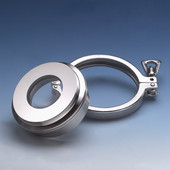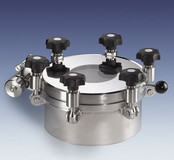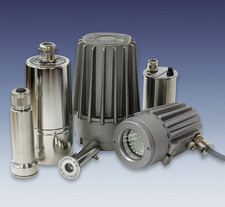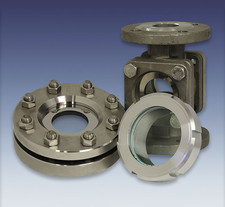Metaglas®
REGULAR SIGHT GLASSES
Products
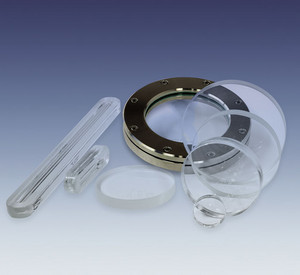
MAXOS® safety sight and level gauge glasses have proved themselves universally where visual process control is essential.

MAXOS® safety sight and level gauge glasses have proved themselves universally where visual process control is essential.
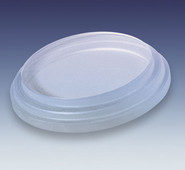
BOROFLOAT® 33 ist ein qualitativ hochwertiges Borosilikatglas mit hervorragenden Eigenschaften für vielfältige Anwendungsmöglichkeiten.
Products

MAXOS® safety sight glasses are used wherever visual inspection of processes in vessels must be ensured under pressure, thermal and chemical stress.

MAXOS® safety sight glasses are used wherever visual inspection of processes in vessels must be ensured under pressure, thermal and chemical stress.

BOROFLOAT® 33 is a high quality borosilicate glass with excellent properties for a wide range of applications.
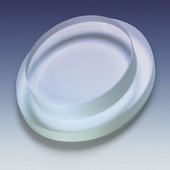
Quartz glass is a single component glass (SiO2). It is one of the most valuable materials for science and industry.
To choose the ideal sight glass for specific operating conditions,
the following criteria should be considered:
- Operating temperature
- Chemical resistance of the glass
- Thermal shock resistance of the glass
- Operational safety requirements
- Installation
CRITERIA FOR THE SELECTION OF SIGHT GLASSES
Furthermore, it is a question of money. One needs to take into account not only the acquisition costs, but also the maintenance cost and life expectancy of the sight glasses.
Operating temperature
LAMINATED SAFETY GLASS (LSG)
LSG consists of two or more glass plates which are firmly connected by highly elastic interlayers (polyvinyl butyral).The working temperature is determined by the interlayer und lies between -60°C and +80°C.


SODALIME GLASS
The majority of all industrially manufactured goods are soda-lime glasses. The chemical and physical characteristics of soda-lime glass set the stage for its wide distribution. Due to the relatively high alkaline strength, the melting point is lower compared to pure SiO2 glass, but it also leads to a twentyfold increase of the coefficient of thermal expansion, from 0.5×10-6 to 9×10-6 /K. The effect is a low resilience against temperature shocks. These glasses are very suitable to be thermally prestressed. The maximum temperature at which the glasses should be used is +150°C (DIN 8902), without restriction in the negative temperature range.
BOROSILICATE GLASS
Borosilicate glasses have a higher proportion of SiO2 (70-80%). 7-13% are allotted to B2O3. They also contain Na2O, K2O and Al2O3. This type of glass is highly resistant against chemical influences and differences in temperature. It is used for production facilities in the chemical industry, in the pharmaceutical industry (phials), for high-amperage light bulbs, and for domestic applications. Borosilicate glasses have a low coefficient of thermal expansion: <5x10-6 /K. The consequence is a low sensitivity to temperature changes. They are resistant to deformation until up to +550°C, they do not emit metals when they get in touch with fluids, and they do not work catalytically. The majority of all laboratory equipment is made of borosilicate glass. The maximum operating temperature for thermally prestressed borosilicate glass is +280°C (momentarily 300°C). At higher temperatures, the prestress is diminished. Non-prestressed borosilicate glass can be used at temperatures up to +450°C.


GLASS CERAMIC
Glass ceramic is, as the name implies, a material between glass and ceramic. In the manufacture, the first step is to melt a glass. Secondly, a controlled crystallization is set into motion by a heat treatment at 800-1200°C. This way, a material is produced which has both a crystalline component and a vitreous component (remaining glassy phase) of 5-50%. Due to the laminate of the remaining glassy phase and some crystalline fractions, which show a negative thermal expansion, it is possible to produce devitrified glasses with a heat expansion of practically 0.
Robax is a transparent glass ceramic with a very low thermal expansion rate (0.2×10-6/K) and a mechanical strength that is sufficient for normal use.
The thermal endurance amounts to +700°C under permanent load or 800°C under momentary load.
QUARTZ GLASS
Quartz glass is a glass made of only one component (SiO2). It features low heat expansion (0.5×10-6/K) and a high thermal endurance of up to +1000°C. Quartz glass is resistant to water, acids and salt solutions. It is only corroded by hydrogen fluoride. It reacts sensitively to alkaline compounds and alkaline earth metal compounds. Those can expedite the devitrification at temperatures higher than +900°C. Lyes (even in aqueous solutions) corrode quartz glass, too.


SAPPHIRE GLASS
Sapphire glass consists only of pure Al2O3. It stands out due to its remarkable chemical resistance. It is neither corroded by acids nor bases/lyes until up to +300°C. Sapphire glass has a hardness of 9 on the Mohs scale, only diamonds are harder. Its high tensile strength (190 N/mm², in comparison: fused quartz has a strength of 67 N/mm², un-hardened borosilicate glass has a strength of 40 N/mm²) and compressive strength, as well as its hardness and temperature resistance (+1000°C) make sapphire glass a perfect material for extreme operating conditions.
CHEMICAL RESISTANCE

Silicate glasses have a very good resistance to acids. They are only attacked by hydrogen fluoride (HF) and hot phosphoric acid (H3PO4). Media with a high pH value (e.g. lyes) can corrode the glass. Temperature and concentration need to be factored in here. The difference in quality of the different glasses is very little up to temperatures of approximately 100°C. At higher temperatures, soda-lime glass is corroded much more than borosilicate glass or quartz glass. Sapphire glass has the best chemical resistance.
Due to its low chemical resistance, lead glass is not used for sight glasses in the chemical industry.
THERMAL SHOCK RESISTANCE
The thermal shock resistance depends on the coefficient of thermal expansion of the glass. The higher it is, the lower the thermal shock resistance is. Soda-lime glass has the highest coefficient of thermal expansion and therefore reacts the most sensitive to thermal shocks. Borosilicate glass features a good thermal shock resistance. Fused quartz is insensitive to thermal variations. Sapphire glass possesses a high thermal conductivity and tensile strength in bending. In combination with its extreme hardness (few surface flaws), these features make sapphire glass a very thermal shock resistant material, even though its thermal expansion coefficient is between those of soda-lime glass and borosilicate glass.

OPERATIONAL SAFETY AND INSTALLATION

Non-prestressed sight glasses offer the least protection. Thermally or chemically pre-stressed sight glasses provide a high level of safety, but in case of damage they fail abruptly and without warning. Mechanically pre-stressed sight glasses provide the best protection, since cracks or chippings give early notice of imminent breakages, so that a replacement is possible in sufficient time.




